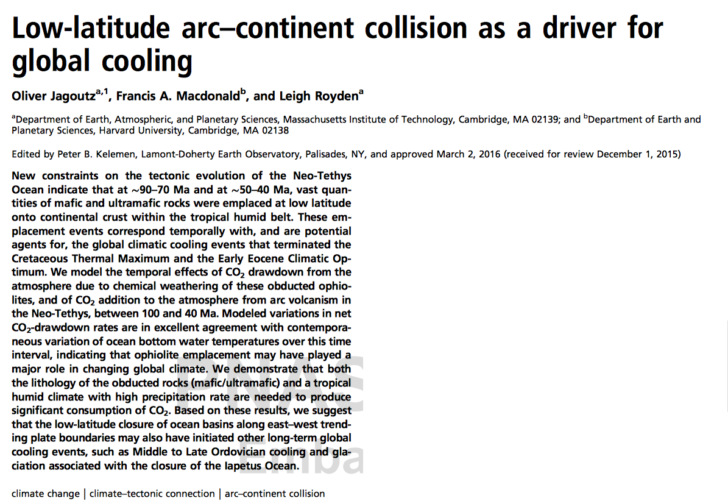Modeling for yet another unverifiable hypothesis.
The media release and abstract are below.
###
A modeling study finds that the upheaval and weathering of a group of rocks called ophiolites in the wet tropics during the closure of the Neo-Tethys Ocean, which separated Gondwana and Eurasia, may have driven decreases in atmospheric carbon dioxide and subsequent global cooling after the Cretaceous Thermal Maximum and the Early Eocene Climatic Optimum, findings that suggest that the closures of east-west, low-latitude oceans may help explain other global climate cooling episodes.

I agree that the mafic/ultramafic rocks are generally alkaline, and will react with acids such as CO2-saturated rain. The paper seems to consider this a major factor in the reduction of atmospheric CO2. In light of the fact that the Keeling Curve shows that photosynthetic plant growth alone can account for a decrease in CO2 of about 6.5 ppm in 5 months (seasonal), I would need to see some more quantitative data on how much CO2 is required to chemically erode the rock, and how fast it could be expected to occur.
Keep in mind that a single ppm of atmospheric CO2 represents an atmospheric burden of 5.9 billion tons, and that chemically eroding the rocks require very little acid (about 1 grams of CO2 for each 3 grams of silica in the rock). Mt. Everest is estimated to weigh about 3.4 billion metric tonnes
https://www.quora.com/What-would-the-estimated-weight-of-Mount-Everest-be
so eroding it chemically would reduce the CO2 in the atmosphere by only about 0.6 ppm, and it would take a LOOONG time.